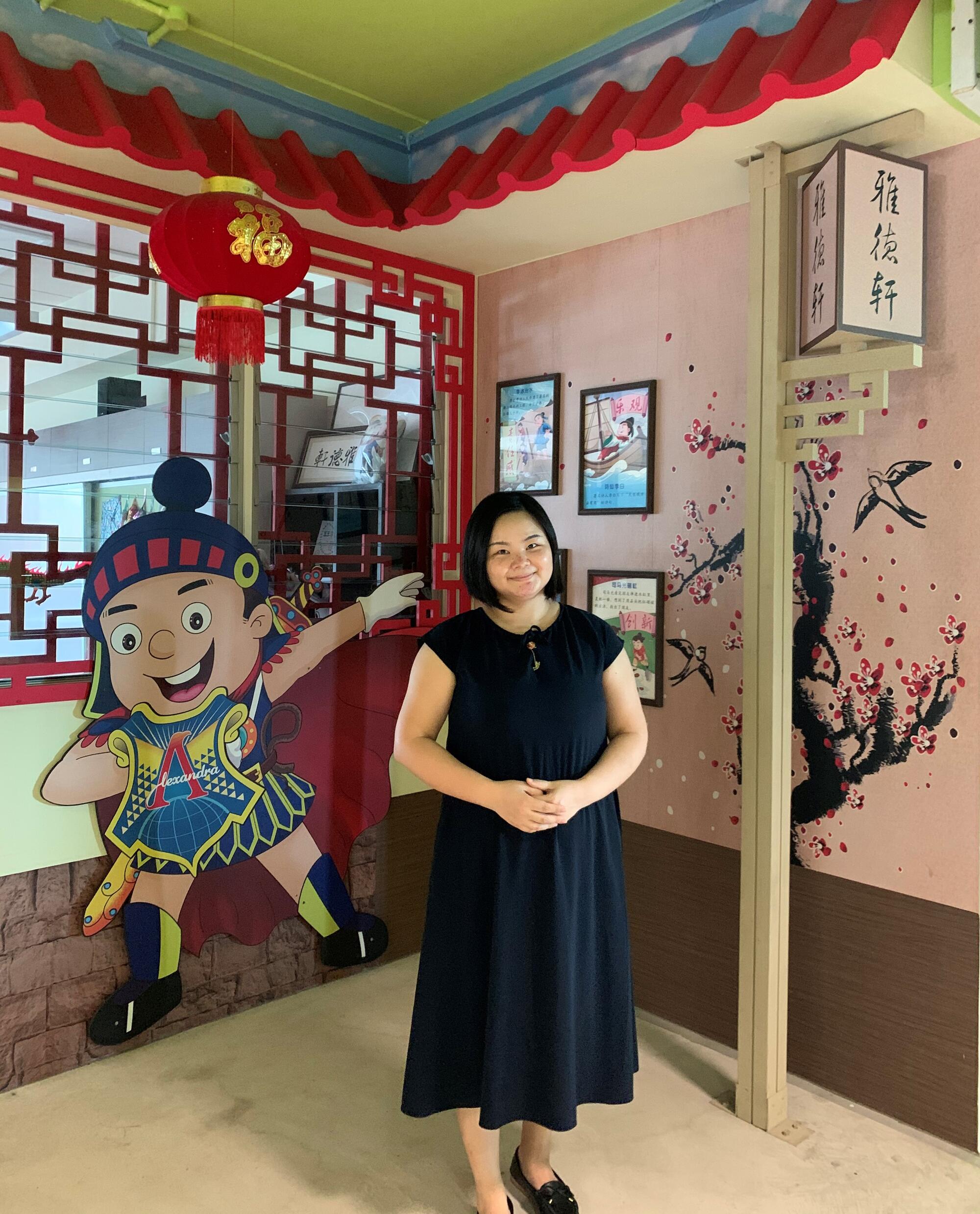Chen Jingjing, Alexandra Primary School, Outstanding Youth in Education Award 2020 finalist
Performing ‘tricks’ for students
I am no magician, but I have a few tricks up my sleeve to keep my students hooked on learning Chinese. The majority of my students seldom use Chinese in daily life, so they sometimes struggle to express themselves in the language. I believe interest is the best teacher. When students are interested, they try to do their best, and it becomes a passion. So, I try different ways to pique my students’ interest.
One idea was to hold an ‘Oscar Award Ceremony’ to make comprehension exercises more exciting. My Primary 5 students find these exercises boring because there are too many wordy dialogues. I split my students into groups and arranged for them to perform certain scenes from the text. The group with the best performance had their photographs displayed in the ‘Corridor of Fame’ outside the classroom.
Students were very excited about this idea and even practised their lines during recess! Suddenly, those long dialogues did not seem so daunting, and I could see they were having fun learning new words and phrases.
Another idea was to use scratch cards for a lesson on comprehension. Nine comprehension questions are presented in a 3×3 scratch card. The students scratch out each square to reveal a question. If they get three correct answers in a line (vertically, horizontally or diagonally), they win the ‘bingo’.
Teaching Good Habits Through Stories
Beyond fun and games, our lessons should teach students values, too. I wrote “Xiao Gong Xiao De” (Uncle Lin’s Story) for Lower Primary students. This is part of a series of Chinese Language (CL) books written by a few teachers in the CL Department. Each book centres around one of our school values: harmony, empathy, resilience, responsibility, integrity, optimism and creativity. I chose the value of ‘empathy’ for my story.
It is about Xiao De, a student who has a bad habit of littering. Uncle Lin, the elderly school cleaner, has to clean up after Xiao De. One day, Xiao De is transformed into Uncle Lin. He now has to clean the school, and this teaches him to be more empathetic towards people around him, especially Uncle Lin. He apologises to Uncle Lin and promises not to litter again.
What was depicted in this story led to something I saw happening in our classrooms. I wanted my students to understand that their inconsiderate acts affect others negatively.
I arranged for my students to act out the story in class. Through the role-playing experience, they understood the emotions of the characters, and they remembered the lesson better. Since then, I have seen students reminding each other to clean up their desks before leaving school. This has been most heart-warming.
Bringing Culture into the Classroom
Three years ago, I led a team of CL teachers to set up a Chinese Cultural Room in my school. This was a perfect opportunity to show our students the Chinese language and culture in action, outside textbooks.
I wanted this room to be a springboard for students to explore Chinese cultural practices, and to be an immersive learning experience for them. I did my research on how buildings and interiors looked in ancient times. Based on that, I revamped one of the classrooms to resemble an ancient Chinese teahouse.
We use this space for students to practise Chinese Calligraphy (Primary 1s and 2s), play Chinese Chess (Primary 3s and 4s), and take part in Tea Appreciation (Primary 5s and 6s). The more they engage in such activities, the more curious they are about Chinese culture.
Many Primary 1s enter our school not knowing how to hold the pencil correctly. When they practise calligraphy (they start off with regular script), we get them to adjust their grip of the pencil first, then the brush. When they begin to appreciate the art of Chinese writing, they understand why we teach them to write the strokes correctly in class. When they understand, they put in the effort to write beautifully.
The P3s and P4s have become so interested in Chinese chess that they ask to play the game in class, after exams. Some of them hold mini-competitions among themselves, and they research strategies to share with their friends.
Likewise, for Tea Appreciation, it’s an eye-opening experience for students who are used to drinking tea from filter bags. We get them to brew tea using tea sets we bought from a speciality shop in Chinatown. We also introduce the idea of Chinese tea etiquette when they serve tea to their classmates.
Nurturing Citizens with a Global Mindset
Last year, I brought P5 students to Suzhou and Shanghai for a seven-day immersion programme. Besides visiting attractions, they spent three full days in two different public schools to understand the Chinese educational system and cultural norms.
This is a part of a Cultural Intelligence module which my colleagues and I developed in my school, to prepare students to be citizens with a global orientation who can adapt and function effectively across different cultures. One of the strategies that I teach my students is: be mindful of cultural differences and adapt to a new culture.
I was glad my students kept up this attitude throughout the trip. Initially, a few students shared that they were not used to squat toilets, which were commonplace in China. But eventually they accepted that this was the cultural norm.
As lessons were conducted entirely in Chinese, my students learnt to reach out to their buddies in the public schools when they needed help. For example, when they did not understand some of the Mathematics terms in Chinese, they asked their buddies for the English equivalent. At the end of the trip, I was very proud of them for showing that they could adapt to and operate in an unfamiliar environment.
If I could have any superpower, I’d want to be the best ‘magician’. So, I can perform ‘tricks’ in class to keep my students hooked on learning the language and appreciating the beauty of Chinese culture.





.jpg)
